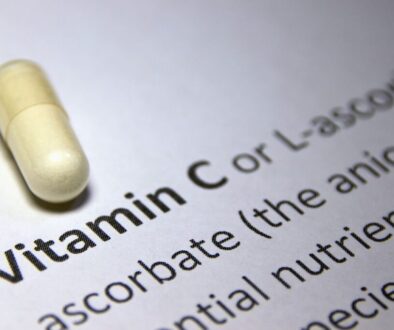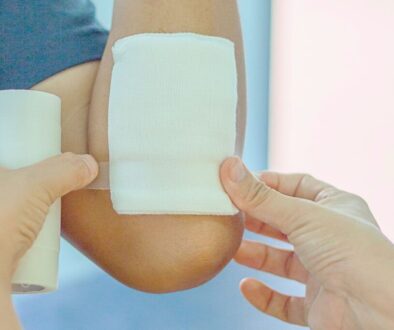The Role Of Extracellular Matrix Proteins In Tissue Repair
The human body’s ability to repair itself is nothing short of amazing. Healing relies on proteins, cells, and structures working together. When disrupted, recovery slows, causing complications. Extracellular matrix proteins play a key role, providing support and signals to help the body rebuild efficiently. Knowing their role is essential to unlocking faster, more effective tissue repair.
Understanding how extracellular matrix proteins work is key to advances in regenerative medicine. In this article, we’ll break down the role of the extracellular matrix (ECM) in tissue repair, highlighting the key proteins involved.
What Is The Extracellular Matrix?
The extracellular matrix (ECM) is a complex and dynamic network that envelops and supports the cells within our tissues. More than just a structural scaffold, it plays a vital role in shaping cell behavior and maintaining tissue integrity.
Essential Components Of The ECM
The ECM is made up of three key categories of biomolecules, each serving a vital role:
- Fibrous proteins: Proteins like collagen and elastin offer support and flexibility. They help the tissue keep its shape while allowing movement.
- Glycoproteins: Proteins like fibronectin and laminin are essential for cell cohesion. They help cells communicate and interact with each other.
- Proteoglycans and glycosaminoglycans (GAGs): These molecules are essential for tissue hydration. They also provide compression resistance and help maintain tissue properties.
These components work together to preserve tissue health. They facilitate cellular function and support recovery after injury.
The ECM’s Role In Cellular Function
The ECM is far more than a structural support; it plays an active role in cell communication. It regulates vital processes such as cellular differentiation, proliferation, and migration. After tissue injury, ECM components send signals to nearby cells. These signals guide the cells to the damaged site and start the healing process.

Key Extracellular Matrix Proteins In Tissue Repair
ECM proteins are crucial for tissue repair. They provide structural support and send signals needed for healing. Among these, four stand out for their essential functions.
Collagen
Collagen, the most abundant protein present in the body, is essential for skin, tendons, and bones. It provides tensile strength. It offers structural support. This makes it critical for wound closure and scar formation.
Type I collagen is essential in tissue repair. It supports cell adhesion and helps growth factors restore function.
Elastin
Elastin provides elasticity, enabling tissues to stretch and return to their original shape. Found in arteries, skin, and lungs, it plays a vital role in maintaining flexibility without compromising strength.
During healing, elastin restores elasticity to tissues. This ensures repaired tissues function effectively after injury.
Fibronectin
Fibronectin connects collagen, cells, and other ECM components via integrins. It plays a vital role in early wound healing. It stabilizes clots and guides cells to damaged areas.
This protein is indispensable for initiating repair and promoting tissue regeneration.
Laminin
Laminin is a key glycoprotein in the basement membrane. It’s essential for cell adhesion. It also contributes to the processes of cell differentiation and migration. Its unique structure organizes other ECM proteins and anchors cells to their surroundings.
Laminin plays a key role in tissue repair. It stabilizes the basement membrane and supports its function. It also aids essential steps in the healing process.
The Role Of ECM Proteins In Tissue Repair
The ECM is essential for tissue repair. It coordinates multiple processes to support healing.
ECM In Wound Healing
- Hemostasis: After an injury, ECM proteins like fibronectin help stabilize blood clots. This effectively stops bleeding.
- Inflammation: ECM-associated cells release cytokines. These cytokines recruit immune cells to the injury site. This starts the healing process.
- Proliferation: Proteins like collagen act as a structural scaffold. They support the growth of new cells.
- Remodeling: As tissues heal, ECM components change dynamically. They balance degradation and synthesis. This process strengthens the newly repaired tissue.
ECM Remodeling
A critical aspect of tissue repair is ECM remodeling. This requires balancing the breakdown of damaged ECM and the synthesis of new components. Enzymes like matrix metalloproteinases (MMPs) help by degrading old ECM. This creates space for new protein deposition and structural renewal.
Impact On Stem Cells
The ECM is vital in stem cell behavior. Proteins like collagen and fibronectin guide stem cell differentiation. They also direct migration to damaged areas. This ensures efficient regeneration and repair.
Factors Influencing ECM Protein Function In Tissue Repair
The functionality of ECM proteins in tissue repair can be affected by several critical factors:
Aging And Degradation
As tissues start to age, the extracellular matrix (ECM) breaks down. This leads to a loss of elasticity and structural strength. Healing slows down, and the risk of chronic wounds increases.
Chronic Inflammation
Chronic conditions like diabetes and autoimmune disorders disrupt ECM regulation. This interference hinders tissue repair. Inflammatory ECM sends signals that worsen damage instead of aiding recovery. This makes the healing process more difficult.
Synthetic Vs. Natural ECM Materials
Engineered ECM biomaterials mimic natural ECM and offer consistency and customization. However, natural ECM is still superior. It integrates seamlessly with the body and supports more effective tissue regeneration.
One example is amniotic tissue allografts, which naturally contain ECM proteins and growth factors that support advanced healing. Providers like DonorCure.org make these biologic therapies accessible for chronic wound care.
Frequently Asked Questions
How do ECM proteins contribute to wound healing?
ECM proteins are essential for guiding cell migration. They help stabilize blood clots. They also provide structural scaffolds needed for tissue regeneration.
Are ECM proteins used in medical treatments?
Absolutely. ECM-derived materials, such as hydrogels, are widely used in wound care. They also have applications in regenerative medicine and drug testing.
What is the difference between ECM and connective tissue?
The ECM is the network of proteins and molecules around cells. Connective tissue includes the ECM and the cells within it, like fibroblasts..
How are ECM proteins studied in laboratories?
Researchers use 3D cell culture models and hydrogels to mimic tissue environments. This allows for detailed analysis of ECM behavior during healing.

Why Extracellular Matrix Proteins Are The Future Of Healing
The extracellular matrix is crucial for tissue repair. It provides structural support, enhances recovery, and enables cell-to-cell communication. Understanding extracellular matrix proteins is advancing rapidly. New therapies are emerging, offering faster recovery and better outcomes for millions.
Curious about the role of extracellular matrix proteins in tissue repair? DonorCure offers amniotic tissue allografts, packed with ECM components, to promote healing and effectively treat chronic wounds. Discover how you can advance transformative regenerative care by visiting DonorCure.org.
Heal Ulcers, Burns, & Surgery Wounds With Break-Through Amniotic Allograft Treatments
Experience the future of wound care with our advanced amniotic allograft treatments. Say goodbye to slow healing. Our innovative solutions promote faster recovery from pressure wounds, ulcers, burns, and surgical wounds. Trust the power of science for your healing journey. Regain your comfort and health today! See if you are eligible for treatment here.

About The Author
Corinne Grace is a full-time writer living in the Philippines. She has a nursing degree from Riverside College. Her background in nursing informs her perspective, allowing her to weave in themes of health, empathy, and resilience into her work.




